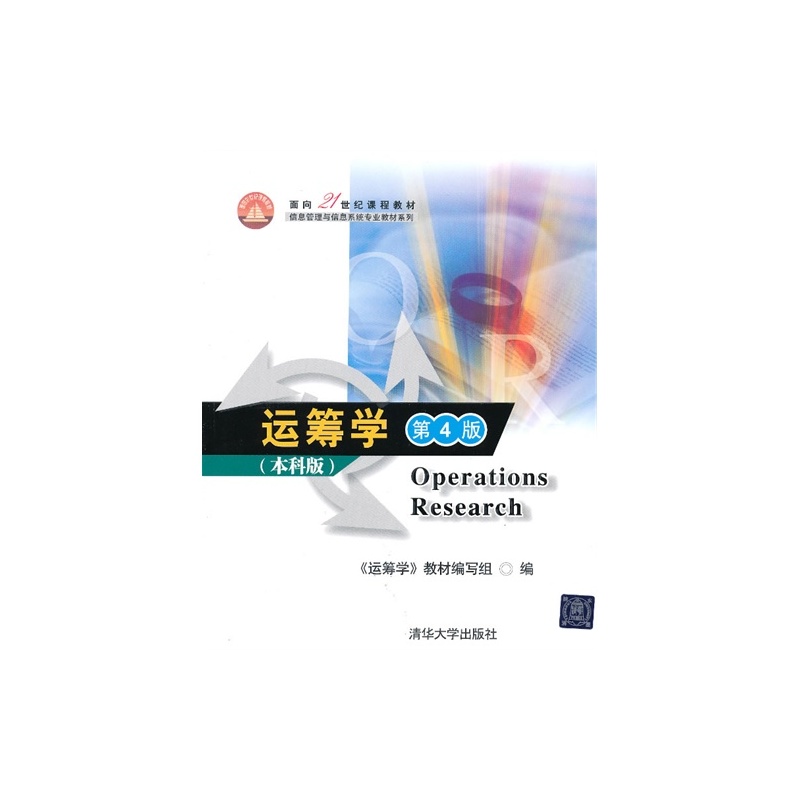
当前课程知识点:Finite Element Method (FEM) Analysis and Applications > 14、Project > Elastic-plastic analysis: elastic-plastic analysis of a thick-walled cylinder under internal pressur > Video I-4
返回《Finite Element Method (FEM) Analysis and Applications》慕课在线视频课程列表
返回《Finite Element Method (FEM) Analysis and Applications》慕课在线视频列表
第4个Project是关于
厚壁圆筒受内压的弹塑性分析
这个厚壁圆筒的内径是15mm,外径是30mm
在内壁受到120MPa的均布内压
圆筒的材料是理想弹塑性材料
它的屈服极限是200MPa
弹性模量是200GPa
泊松比是0.3
材料是服从Mises屈服准则
我们假设这个厚壁圆筒的长度很长
我们要分析一下这个厚壁圆筒
在受到120MPa内压的情形下它是怎么样一个变形情况
它是否进入塑性
厚壁圆筒的建模要点主要是
由于圆筒很长
因此我们可以看出来它是属于一个平面应变问题
对于平面应变问题的话
我们可以根据它的对称性
用1/4的横截面来完成我们的计算模型
在ANSYS中我们选择的是PLANE183号单元
作为单元类型
然后设置的时候应该选择平面应变类型
弹塑性分析主要是
它的材料是非线性的
对于非线性的材料的话
因为它是一个理想弹塑性材料
那么它也是属于一个双线性的动态强化的材料模型
只是它的切向模量,也就是我们说的硬化是等于0的
所以我们在这设置的就是切向模量等于0
然后我们还给出相应的屈服应力
通过
对于弹塑性分析的话
因为它已经进入了非线性阶段
所以利用非线性计算,我们必须要分步进行计算
我们就可以通过对应的这个命令来设置计算步长
在后处理阶段,我们可以通过这个命令
把后处理的坐标系显示为全局圆柱坐标系
然后还通过一些路径定义的命令
把内径到外径之间的沿着这条路径上的
径向还有周向的应力变化
我们就可以获得
我们还可以在时间历程的后处理中
得到内壁点和外壁点
它们随着时间变化的变化情况
作一个相应的曲线
首先来看一下第4个Project的命令流
它的关键点是在这
通过这个命令定义它是双线性动态强化模型
然后根据
我们可以定义它的屈服强度等于200
切向模量等于0
由于弹塑性分析是属于非线性分析
因此我们要定义相应的计算子步
这个命令就是定义的相应的初始步长是等于0.1
而最小的时间步长是0.05
最大时间步长是0.25
然后这个命令是设定所有计算结果的保存方式
也就是说所有的子步我们都保存了
然后进入求解
这个命令是路径的命令
我们就可以通过对应路径的坐标点来进行定义
定义完路径后我们就可以通过
把我们所希望的应力分量映射到对应的路径上
除了一般后处理模块之外
我们还有时序后处理模块
时序后处理模块可以获得在不同子步下
因为这是非线性计算,我们分成很多子步
就可以获得不同子步下应力、应变随时间变化的曲线
大家可以看出来这部分的后处理相对比较麻烦
为了让大家有一个更直观的感觉
我们把对应的命令流一步步拷过来
我们首先看一下
如果我们把路径显示的时间分量Copy过来
直接粘贴完成
我们就可以得到从内径到外径的分布情况
也就是我们的径向和周向的应力
它的分布情况是这样的形式
这是在一般后处理形式下
如果我们希望获得在某一点处
它的径向应力或者是切向应力
随着时间变化是怎样的一种情况
我们就要进入对应的时序后处理模块
我们把这一部分的命令拷贝过去
我们再进入ANSYS平台
把它粘贴进去
从这个曲线上我们看出来
蓝色的曲线就是内壁的等效应力随着时间的变化
也就是载荷步的变化关系
我们可以看出
大致在内压等于100MPa的时候
内壁已经进入屈服
进入屈服之后
因为材料是理想弹塑性材料
所以它是没有硬化的
所以后面的等效应力都是等于200MPa
而外壁是一直处于弹性的变形阶段
-Finite element, infinite capabilities
--Video
-1.1 Classification of mechanics:particle、rigid body、deformed body mechanics
--1.1 Test
-1.2 Main points for deformed body mechanics
--1.2 Test
-1.3 Methods to solve differential equation solving method
--1.3 Test
-1.4 Function approximation
--1.4 Test
-1.5 Function approximation defined on complex domains
--1.5 Test
-1.6 The core of finite element: subdomain function approximation for complex domains
--1.6 Test
-1.7 History and software of FEM development
--1.7 Test
-Discussion
-Homework
-2.1 Principles of mechanic analysis of springs
--2.1 Test
-2.2 Comparison between spring element and bar element
--2.2 Test
-2.3 Coordinate transformation of bar element
--2.3 Test
-2.4 An example of a four-bar structure
--2.4 Test
-2.5 ANSYS case analysis of four-bar structure
--ANSYS
-Discussion
-3.1 Mechanical description and basic assumptions for deformed body
--3.1 Test
-3.2 Index notation
--3.2 Test
-3.3 Thoughts on three major variables and three major equations
--3.3 Test
-3.4 Test
-3.4 Construction of equilibrium Equation of Plane Problem
-3.5 Test
-3.5 Construction of strain-displacement relations for plane problems
-3.6 Test
-3.6 Construction of constitutive relations for plane problems
-3.7 Test
-3.7 Two kinds of boundary conditions
- Discussion
-- Discussion
-4.1 Test
-4.1 Discussion of several special cases
-4.2 Test
-4.2 A complete solution of a simple bar under uniaxial tension based on elastic mechanics
-4.3 Test
-4.3 The description and solution of plane beam under pure bending
-4.4 Test
-4.4 Complete description of 3D elastic problem
-4.5 Test
-4.5 Description and understanding of tensor
-Discussion
-5.1 Test
-5.1Main method classification and trial function method for solving deformed body mechanics equation
-5.2 Test
-5.2 Trial function method for solving pure bending beam: residual value method
-5.3 Test
-5.3How to reduce the order of the derivative of trial function
-5.4 Test
-5.4 The principle of virtual work for solving plane bending beam
-5.5 Test
-5.5 The variational basis of the principle of minimum potential energy for solving the plane bending
-5.6 Test
-5.6 The general energy principle of elastic problem
-Discussion
-6.1Test
-6.1 Classic method and finite element method based on trial function
-6.2 Test
-6.2 Natural discretization and approximated discretization in finite element method
-6.3 Test
-6.3 Basic steps in the finite element method
-6.4 Test
-6.4 Comparison of classic method and finite element method
-Discussion
-7.1 Test
-7.1 Construction and MATLAB programming of bar element in local coordinate system
-7.2 Test
-7.2 Construction and MATLAB programming of plane pure bending beam element in local coordinate syste
-7.3 Construction of three-dimensional beam element in local coordinate system
-7.4 Test
-7.4 Beam element coordinate transformation
-7.5 Test
-7.5 Treatment of distributed force
-7.6 Case Analysis and MATLAB programming of portal frame structure
-7.7 ANSYS case analysis of portal frame structure
-8.1 Test
-8.1 Two-dimensional 3-node triangular element and MATLAB programming
-8.2 Test
-8.2 Two-dimensional 4-node rectangular element and MATLAB programming
-8.3 Test
-8.3 Axisymmetric element
-8.4 Test
-8.4 Treatment of distributed force
-8.5 MATLAB programming of 2D plane rectangular thin plate
-8.6 Finite element GUI operation and command flow of a plane rectangular thin plate on ANSYS softwar
-Discussion
-9.1 Three-dimensional 4-node tetrahedral element and MATLAB programming
-9.2 Three-dimensional 8-node hexahedral element and MATLAB programming
-9.3 Principle of the isoparametric element
-9.4Test
-9.4Numerical integration
-9.5 MATLAB programming for typical 2D problems
-9.6 ANSYS analysis case of typical 3Dl problem
-Discussion
-10.1Test
-10.1Node number and storage bandwidth
-10.2Test
-10.2 Properties of shape function matrix and stiffness matrix
-10.3Test
-10.3 Treatment of boundary conditions and calculation of reaction forces
-10.4Test
-10.4 Requirements for construction and convergence of displacement function
-10.5Test
-10.5C0 element and C1 element
-10.6 Test
-10.6 Patch test of element
-10.7 Test
-10.7 Accuracy and property of numerical solutions of finite element analysis
-10.8Test
-10.8 Error and average processing of element stress calculation result
-10.9 Test
-10.9 Error control and the accuracy improving method of h method and p method
-Discussion
-11.1 Test
-11.1 1D high-order element
-11.2 Test
-11.2 2D high-order element
-11.3 Test
-11.3 3D high-order element
-11.4 Test
-11.4 Bending plate element based on thin plate theory
-11.5 Test
-11.5 Sub-structure and super-element
-12.1Test
-12.1 Finite element analysis for structural vibration: basic principle
-12.2 Test
-12.2 Case of finite element analysis for structural vibration
-12.3 Test
-12.3 Finite element analysis for elastic-plastic problems: basic principle
-12.4 Test
-12.4 Finite element analysis for elastic-plastic problems: solving non-linear equations
-Discussion
-13.1 Test
-13.1 Finite element analysis for heat transfer: basic principle
-13.2 Test
-13.2 Case of finite element analysis for heat transfer
-13.3 Test
-13.3 Finite element analysis for thermal stress problems: basic principle
-13.4 Test
-13.4 Finite element analysis for thermal stress problems: solving non-linear equation
-Discussion
-2D problem: finite element analysis of a 2D perforated plate
-3D problem: meshing control of a flower-shaped chuck
-Modal analysis of vibration: Modal analysis of a cable-stayed bridge
-Elastic-plastic analysis: elastic-plastic analysis of a thick-walled cylinder under internal pressur
-Heat transfer analysis: transient problem of temperature field during steel cylinder cooling process
-Thermal stress analysis: temperature and assembly stress analysis of truss structure
-Probability of structure: Probabilistic design analysis of large hydraulic press frame
-Modeling and application of methods: Modeling and analysis of p-type elements for plane problem


